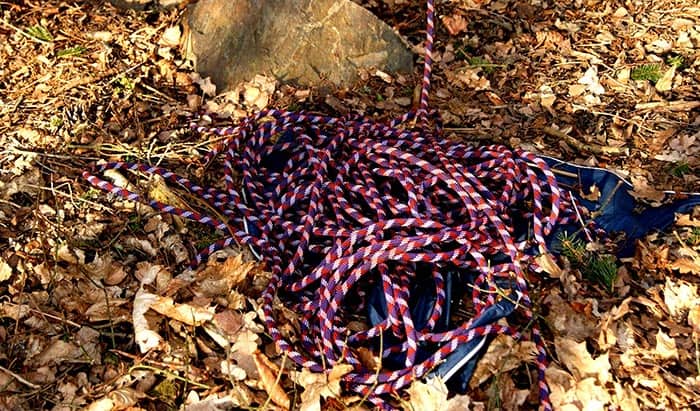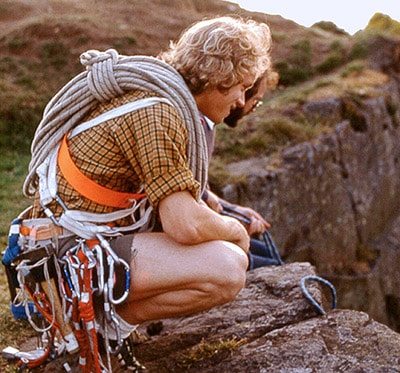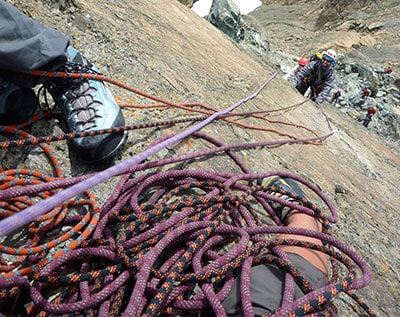If you are just new to climbing or just planning to learn the sport, there are many things to consider, especially in acquiring equipment. One of which is choosing the length of the rope. Most modern climbing ropes being used are 60 and 70 meters.
But what is the difference between these two ropes in terms of usage? Which is best for beginners? All of these questions and other related information will be answered as we differentiate 60m vs 70m rope.
Contents
All About the Location
Using 60 meters or 70 meters of rope depends on the location of your climbing activity. In the location, if there aren’t any climbs that are more than 90 feet, then the climber should be fine with a 60-meter rope.
However, a 70-meter rope is best suited for that climbing activity if you plan to climb more than that height. So, it really depends on the location of your climbing activity. There are places where the climbing site is not more than 30 meters. So, you need a much longer rope for these sites.
There are also other locations where the sites need a longer rope. So, a 70-meter rope can be used for these locations. Either way, knowing your climbing sites is essential for you to determine the proper rope length that will be used.
And Your Climbing Plan
The length of the rope will also depend on what you plan to climb. Of course, if you are planning to climb in an area where there is nothing higher than 30 meters, a 60-meter rope is more that5 enough with stretch for your climbing activity.
For example, a climber will prefer a 70-meter rope because he plans to climb long European routes. Climbing the famous Kalymnos will require at least 70 meters of rope. Even other European climbing locations need more than 70 meters.
Depends on the Type of Climbing
Choosing between 60 meters or 70 meters rope also depends on what type of climbing you are involved with. If you are only doing sport climbing, I don’t think the routes are more than 30 meters tall, which means 60 meters is just fine.
Do not bother to have 70 meters for sport climbing since most of the routes in this type of climbing are all set with a 50-meter rope. So, using a 60-meter rope is just enough for you when you are doing sports climbing.
Now, if you gain some experience and try trad climbing or multi-pitch climbing, you can get the 70-meter rope. Use this rope for the more advanced climbing activity and leave the 60-meter rope for sports climbing.
And Weight Matters Too
Weight is also a significant factor when it comes to choosing a 60m or a 70m rope. If you decide to use a 70m rope in a climbing route that does not need it, you will just be carrying the extra weight of its extra 10-meter length.
Remember, those extra 10 meters of weight are noticeable when lugging it around. Flaking or pulling through will take much longer with a much longer 70-meter rope. It is said that a 70-meter rope is 20% heavier than a 60-meter rope.
But then again, you also need to consider your climbing needs. If you feel that the extra weight will not make you uncomfortable, then it’s fine. If most of the climbing routes require a 70-meter rope, then go for the longer rope regardless of the extra weight it brings you.
You should also consider the risk of running out of a rope when rappelling or lowering is too high if you fail to check or forget the length of the route. The extra length will save you from further issues down the road.
Price Matters Too
Another noticeable difference, aside from one being longer than the other, is the price. It is understood that a 70- meter rope is much more expensive compared to its shorter counterpart. For newbie climbers, the price difference is enormous, especially for those who do not have a budget to buy a more expensive rope.
Obviously, a 70-meter rope costs more, and getting it with a limited budget will also be an issue if this is your first rope. You do not need to sacrifice your budget if you do not need it still. The relative price difference may not be an issue to some, but not all aspiring climbers have the same financial resources as others.
Conclusion
When deciding what to buy between a 60m vs 70m rope, remember that the rope needs to be long enough so that half of its length must be equal to or longer than the total length of the route or pitch you are climbing.
If you are climbing a 30-meter route, it is a must to have a 60-meter rope for you to climb up and then go down using an anchor after reaching the top. Nowadays, some modern climbing routes have a 70-meter rope for climbers to go down safely.
If you have no idea the length of the climbing rope you need in a particular climbing route, it is best to ask other climbers who have done it or refer to a guidebook.



